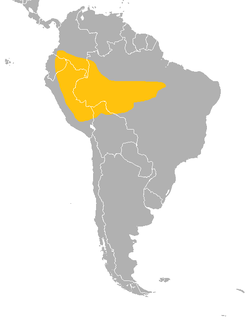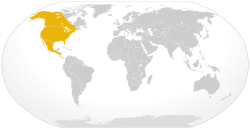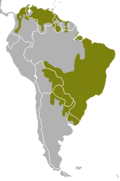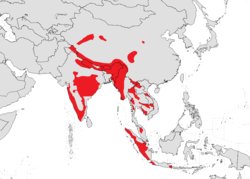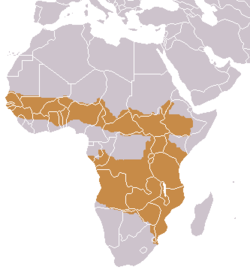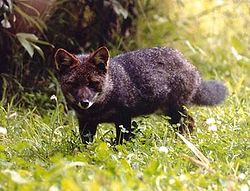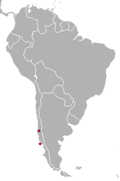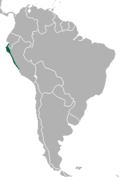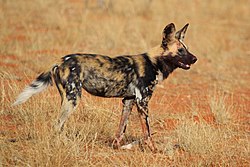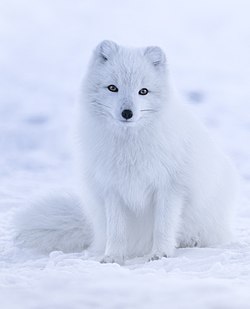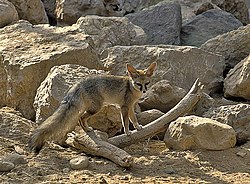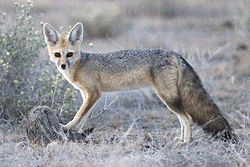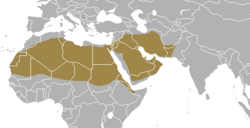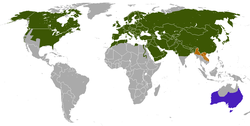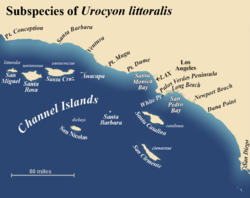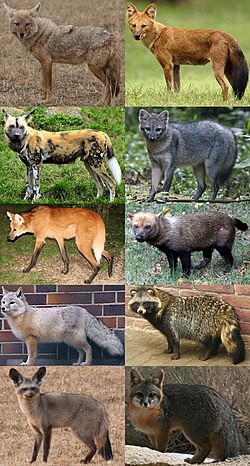
Canidae is a family of mammals in the order Carnivora, which includes domestic dogs, wolves, coyotes, foxes, jackals, dingoes, and many other extant and extinct dog-like mammals. A member of this family is called a canid; all extant species are a part of a single subfamily, Caninae, and are called canines. They are found on all continents except Antarctica, having arrived independently or accompanied human beings over extended periods of time. Canids vary in size, including tails, from the 2 meter (6 ft 7 in) wolf to the 46 cm (18 in) fennec fox. Population sizes range from the Falkland Islands wolf, extinct since 1876, to the domestic dog, which has a worldwide population of over 1 billion. [1] The body forms of canids are similar, typically having long muzzles, upright ears, teeth adapted for cracking bones and slicing flesh, long legs, and bushy tails. [2] Most species are social animals, living together in family units or small groups and behaving cooperatively. Typically, only the dominant pair in a group breeds, and a litter of young is reared annually in an underground den. Canids communicate by scent signals and vocalizations. [3] One canid, the domestic dog, entered into a partnership with humans at least 14,000 years ago and today remains one of the most widely kept domestic animals. [4]
Contents
The 13 extant genera and 37 species of Caninae are primarily split into two tribes: Canini, which includes 11 genera and 19 species, comprising the wolf-like Canina subtribe and the South American Cerdocyonina subtribe; and Vulpini, the fox-like canids, comprising 3 genera and 15 species. Not included in either tribe is the genus Urocyon , which includes 2 species, mainly comprising the gray fox and believed to be basal to the family. Additionally, one genus in Canini, Dusicyon , was composed of two recently extinct species, with the South American fox going extinct around 400 years ago and the Falkland Islands wolf going extinct in 1876.
In addition to the extant Caninae, Canidae contains two extinct subfamilies designated as Hesperocyoninae and Borophaginae. Extinct species have also been placed into Caninae, in both extant and extinct genera; at least 80 extinct Caninae species have been found, as well as over 70 species in Borophaginae and nearly 30 in Hesperocyoninae, though due to ongoing research and discoveries the exact number and categorization is not fixed. The earliest canids found belong to Hesperocyoninae, and are believed to have diverged from the existing Caniformia suborder around 37 million years ago. [5]

